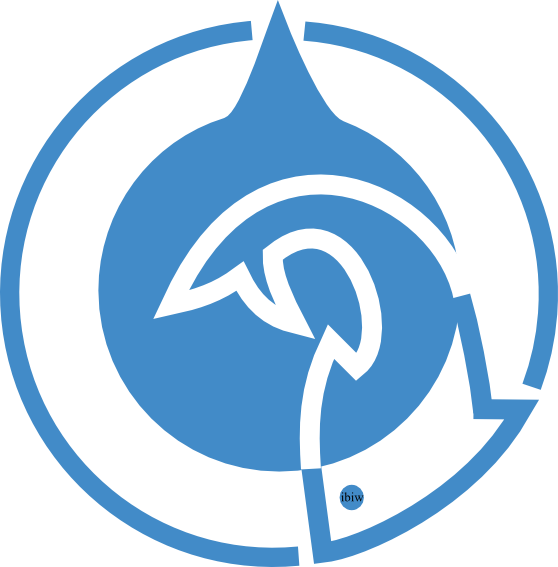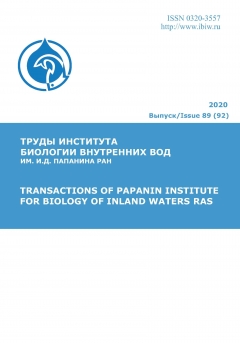VAK Russia 03.03.00
UDC 57
Reducing the external load is an uncontested method of reducing the rate of anthropogenic eutrophication of the lake, since the possibilities of real impact aimed at reducing the internal load over a large area are extremely limited. The purpose of this study is a quantitative assessment of the external load of nitrogen and phosphorus on Lake Nero from the drainage basin in modern conditions. The assessment of the nutrient load from the drainage area of Lake Nero was carried out according to the mathematical model of the formation of the nutrient load, developed at the Institute of Limnology of the Russian Academy of Sciences. The model is designed to solve problems related to the quantitative assessment of the external load on water bodies, formed by point and nonpoint sources of pollution, forecast of its change under the influence of possible anthropogenic and climatic changes, taking into account the influence of hydrological factors and the retention of nutrients by the catchment and the hydrographic network. It was found that the load on the aquatic area from the catchment is 51.5 t P / year and 585.5 t N / year, of which 36.0 t P / year (70% of the total load on the lake) and 176.5 t N / year (30%) go directly to lake from coastal settlements. Provided that the entire population is connected to treatment facilities and the introduction of best available technologies (BAT) for agriculture, according to a numerical experiment, the load will decrease by 23% for total phosphorus and 19% for total nitrogen.
nutrient load, reservoir, catchment area, modeling
1. Babanazarova O. V., Karmayer R., Sidelev S. I., Aleksandrina E. M., Saharova E. G. Struktura fitoplanktona i soderzhanie mikrocistinov v vysokoevtrofnom ozere Nero // Vodnye resursy, 2011. T. 38 № 2. S. 223-231.
2. Bikbulatov E.S., Bikbulatova E.M., Litvinov A.S., Poddubnyy S.A. Gidrologiya i gidrohimiya ozera Nero. Rybinsk: Izd-vo OAO «Rybinskiy dom pechati». 2003. 192 s.
3. Bryuhanov A.Yu., Maksimov D.A., Huhta H., Vasil'ev E.V., Minin V.B., Subbotin I.A. Rekomendacii po organizacii i provedeniyu proizvodstvennogo ekologicheskogo kontrolya sistem pererabotki i ispol'zovaniya navoza (pometa). Poryadok razrabotki Tehnologicheskogo reglamenta. SPb: SZNIIMESH. 2012. 53c.
4. Bryuhanov A.Yu., Kondrat'ev S.A., Oblomkova N.S., Oguzdin A.S., Subbotin I.A. Metodika opredeleniya biogennoy nagruzki sel'skohozyaystvennogo proizvodstva na vodnye ob'ekty // Tehnologii i tehnicheskie sredstva mehanizirovannogo proizvodstva produkcii rastenievodstva i zhivotnovodstva. 2016. № 89. S. 175-183.
5. Bryuhanov A.Yu., Shalavina E.V., Vasil'ev E.V. Metodika ukrupnennoy ocenki sutochnogo i godovogo vyhoda navoza/pometa // Molochnohozyaystvennyy vestnik. 2014. № 1 (13). S. 78-85.
6. Vremennye metodicheskie rekomendacii po prognozirovaniyu himicheskogo sostava poverhnostnyh vod s uchetom pereraspredeleniya stoka. L.: Gidrometeoizdat. 1988. 56 s.
7. Kondrat'ev S.A. Formirovanie vneshney nagruzki na vodoemy: problemy modelirovaniya. SPb.: Nauka. 2007. 253 s.
8. Kondrat'ev S.A., Golosov S.D, Zverev I.S., Ryabchenko V.A., Dvornikov A.Yu. Modelirovanie abioticheskih processov v sisteme vodosbor-vodoem (na primere Chudsko-Pskovskogo ozera). SPb: Nestor-Istoriya. 2010. 116 s.
9. Kondrat'ev S. A., Bryuhanov A. Yu., Terehov A. V. Struktura poverhnosti vodosbora kak opredelyayuschiy faktor biogennoy nagruzki na vodoem (po dannym matematicheskogo modelirovaniya) // Voprosy geografii. 2018. Vyp. 145. S. 89-108.
10. Kondrat'ev S.A., Shmakova M.V. Matematicheskoe modelirovanie massoperenosa v sisteme vodosbor - vodotok - vodoem. SPb: Nestor-Istoriya, 2019. 248 s.
11. Otchet o nauchno-issledovatel'skoy rabote «Ocenka sovremennogo sostoyaniya ozera Nero v Rostovskom municipal'noi okruge Yaroslavskoy oblasti» (zaklyuchitel'nyy). Yaroslavskiy gosudarstvennyy universitet im. Demidova, Yaroslavl', 2011. 45 s.
12. Pozdnyakov Sh.R., Kondrat'ev S.A., Tarbaeva V.M., Shmakova M.V., Bryuhanov A.Yu., Vorob'eva E.A., Oblomkova N.S. Nauchnoe obosnovanie vypolneniya rekomendaciy HELKOM po snizheniyu biogennoy nagruzki na Finskiy zaliv so storony Rossii // Vestnik SPbGU. Ser. 7. Geologiya. Geografiya. 2016. Vyp.4. S. 53-65.
13. RD-APK 1.10.15.02-2008 Metodicheskie rekomendacii po tehnologicheskomu proektirovaniyu sistem udaleniya i podgotovki k ispol'zovaniyu navoza i pometa. M.: Minsel'hoz RF. 2008.
14. Sostoyanie ekosistemy ozera Nero v nachale XXI veka. Pod red. Lazareva V.I. M.: Nauka. 2008. 406 s.
15. Behrendt H., Dannowski R. Nutrients and heavy metals in the Odra River system. Germany: Weissensee Verlag Publ. 2007. 337 p.
16. Guidelines for the compilation of waterborne pollution to the Baltic Sea (PLC-water). Helsinki, Finland: HELCOM Publ. 2005. 80 p.
17. Venohl M., Donohue I., Fogelberg S., Arheimer D., Irvine K., Behrendt H. Nitrogen retention in a river system and effects of river morphology and lakes // Water Sciences & Technology. 2005. Vol. 51 (3-4). P. 19-29.
18. Vink R., Behrendt H. Heavy metal transport in large river systems: heavy metals emission and load in the Rhine and Elbe river basins // Hydrol. Process. 2002, № 16. P. 3227-3244.








